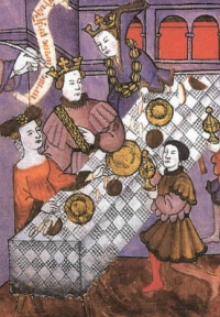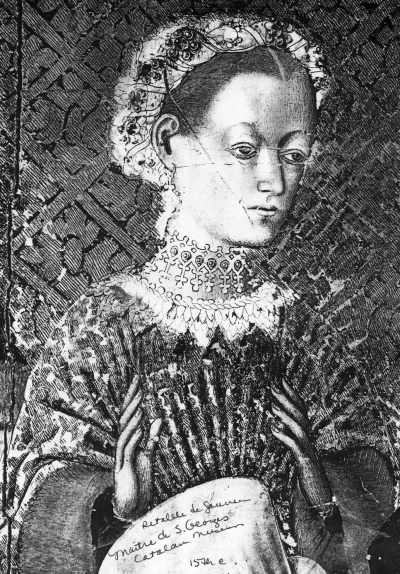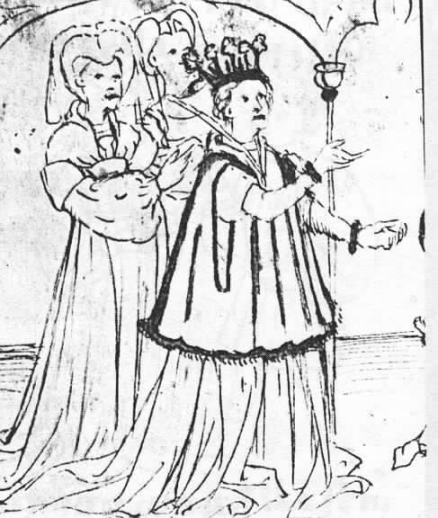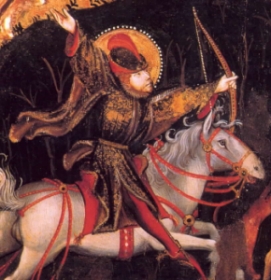
(that's Houpellande, to all of you on
the other side of the Pyrenees...)
The hopa was an international style popular in the 14th/15th centuries
throughout Europe. Through the course of it's popularity, it's particular
elements varied, dependant upon time and place. However, it's most famous
characteristics were the voluminous cut, in both the body and the sleeves.
Often they were lined with fur. As a rule, hopas weren't embellished;
the amount of fabric required for their construction was evidence enough
of the wealth of the wearer.
Peculiar to Spain (and possibly just to Cataluña) is a unique form
of the hopa worn by women. Characterized by an extremely high collar,
it is seen in various forms.

The Story of Queen Esther.
Biblia de la Casa Alba, Madrid. 1433-33

Instituto Valencia de Don Juan, Madrid
(C.92) 1401-1407


Benito Arnaldín. St. Quiteria. Mateu Collection, Barcelona

c.1415 Virgin and Child Crowning
Bishop Sancho de Rojas and Juan II
Church of San Benito de Valloadolid
Prado Museum
Master of St. Georges. Retable de Sauver.
Museu de Cataluña, Barcelona
La reina Uracca consultando a los suyos. Crónica de los Reyes de Castilla. Bilbioteca Nacional, Paris

1409-1415 Pontifical
Tresor de la catedral Arxiu de la Catedral de Girona
Joan Mates. Episode with a Saint Hunting a Stag.
Altarpiece of the Annunciation, the Convent of San Francesco, Stampace.
c.1410.
(No. 29) Pinacoteca Nazionale, Caller.

Actually, not a hopa, but a "tabard", split in the front, with the distinctive collar.



